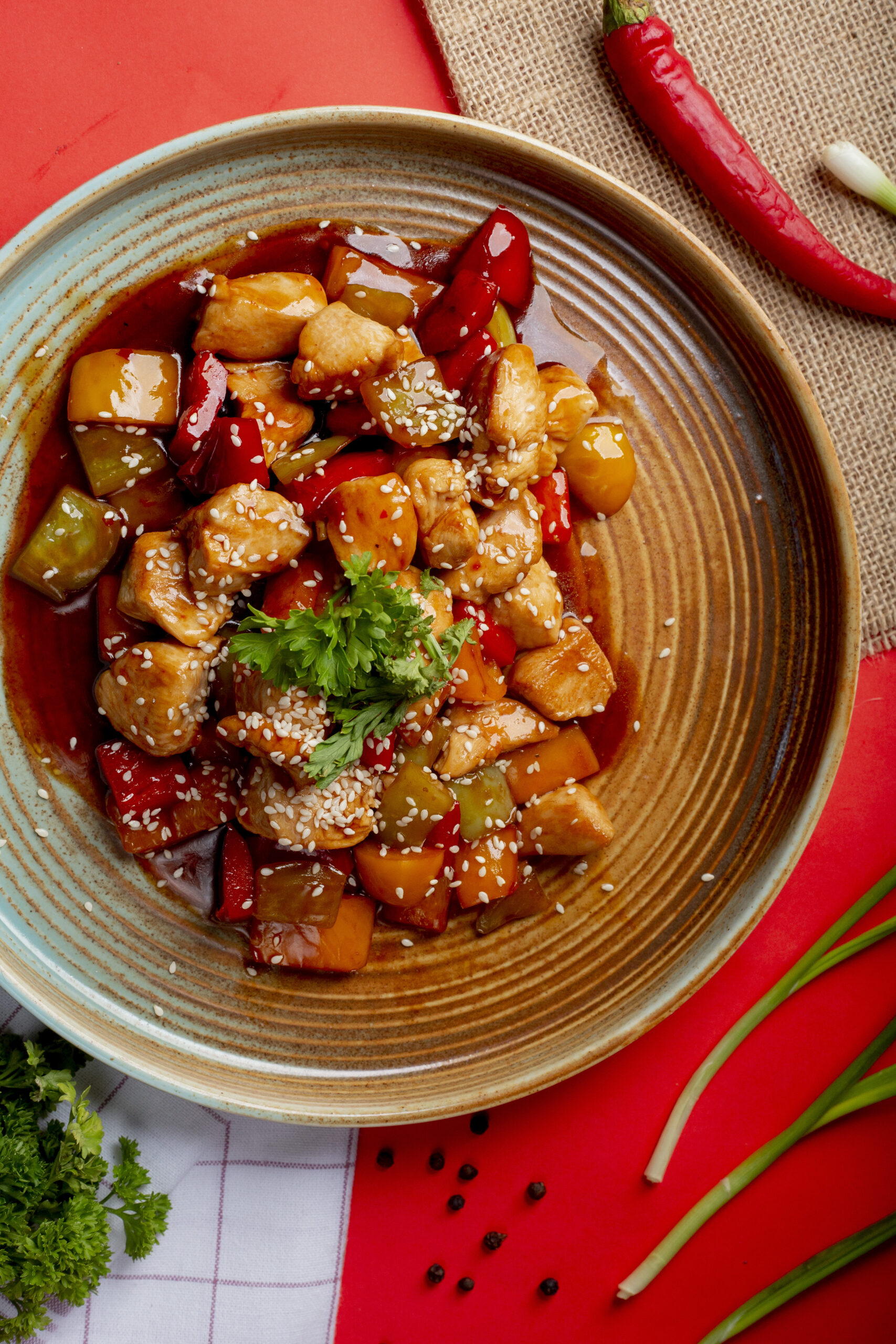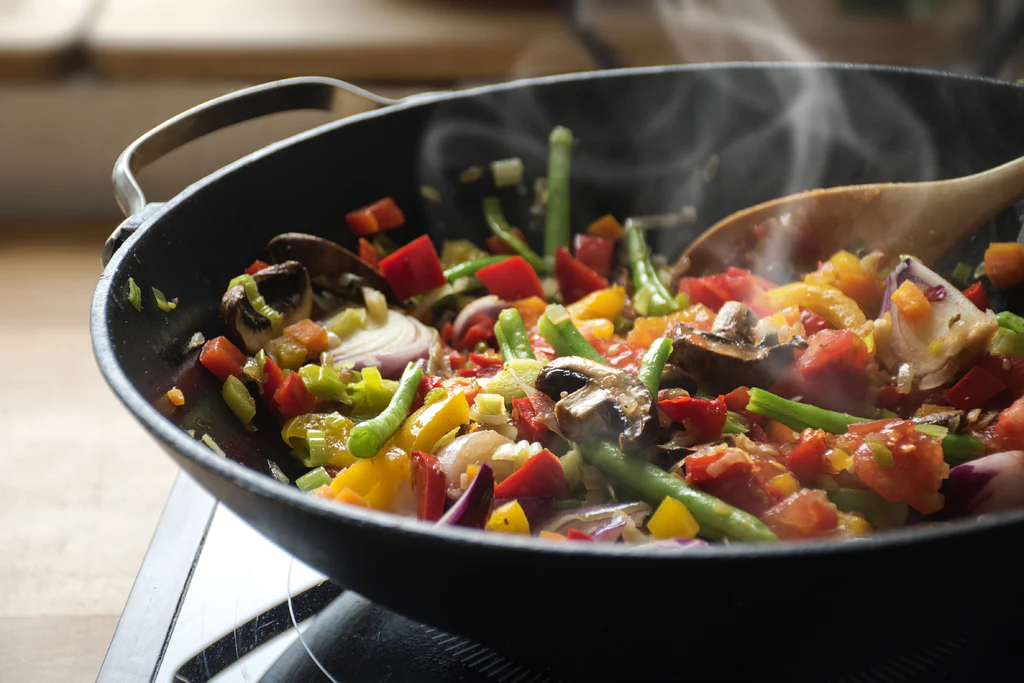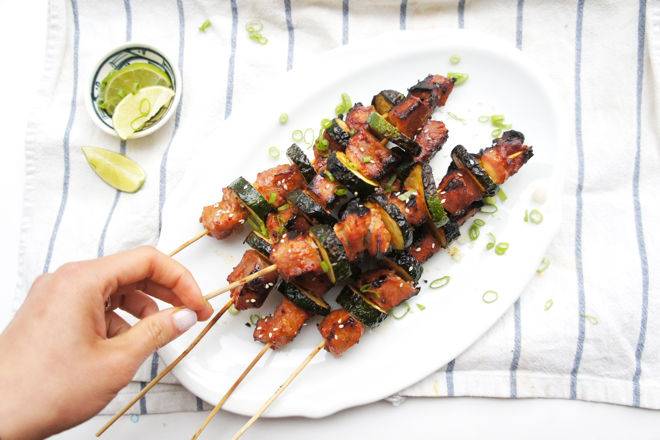Kung Pao Chicken, a quintessential dish from Sichuan cuisine, is renowned for its bold flavors and tantalizing combination of spicy, savory, and slightly sweet tastes. Originating from the Sichuan province of China, this dish has won hearts worldwide with its unique blend of ingredients. The star of the dish is tender, crispy chicken, complemented by crunchy peanuts, colorful vegetables, and a distinctive sauce that packs a punch. Let’s dive into the step-by-step process of creating this culinary masterpiece in your kitchen.
Discover more on The Role of Fermentation in Chinese Cooking
Ingredients:
- Chicken:
- 500g boneless chicken breast, diced into bite-sized pieces
- 1 tablespoon soy sauce
- 1 tablespoon rice wine or dry sherry
- 1 egg white
- 2 tablespoons cornstarch
- Oil for frying
- Marinade:
- 2 tablespoons soy sauce
- 1 tablespoon rice wine or dry sherry
- 1 teaspoon cornstarch
- Sauce:
- 2 tablespoons soy sauce
- 1 tablespoon dark soy sauce
- 1 tablespoon rice vinegar
- 1 tablespoon hoisin sauce
- 1 tablespoon sugar
- 1/2 cup chicken broth
- 1 tablespoon cornstarch mixed with 2 tablespoons water
- Stir-fry:
- 2 tablespoons oil
- 8-10 dried red chilies, whole
- 1 tablespoon Sichuan peppercorns
- 3 cloves garlic, minced
- 1-inch piece of ginger, minced
- 1 red bell pepper, diced
- 1 green bell pepper, diced
- 1/2 cup unsalted peanuts
- 4 green onions, chopped
Instructions:
1. Preparing the Chicken:
Start by marinating the chicken. In a bowl, combine soy sauce, rice wine, and egg whites. Add the chicken pieces and mix well. Sprinkle cornstarch over the chicken and toss until evenly coated. Let it sit for 20 minutes to absorb the flavors.
2. Frying the Chicken:
Heat oil in a wok or deep skillet over medium-high heat. Once the oil is hot, carefully add the chicken pieces in batches. Fry until golden brown and crispy, about 3-4 minutes per batch. Remove the chicken with a slotted spoon and drain on paper towels. Set aside.
3. Preparing the Sauce:
While the chicken is frying, prepare the sauce. In a bowl, mix soy sauce, dark soy sauce, rice vinegar, hoisin sauce, sugar, and chicken broth. Stir until the sugar dissolves. Set aside.
4. Stir-frying the Vegetables and Peanuts:
In the same wok, heat 2 tablespoons of oil over medium heat. Add the dried red chilies and Sichuan peppercorns. Stir-fry for about 30 seconds until they become fragrant and slightly darken in color. Be careful not to burn them.
Next, add the minced garlic and ginger. Stir-fry for another 30 seconds until aromatic. Then, add the diced red and green bell peppers. Cook for 2-3 minutes until they start to soften.
5. Combining the Ingredients:
Return the fried chicken to the wok. Pour the prepared sauce over the chicken and vegetables. Stir well to combine. Bring the mixture to a boil, then reduce the heat to a simmer. Add the cornstarch slurry (cornstarch mixed with water) to the wok. Stir continuously until the sauce thickens and coats the chicken and vegetables evenly.
6. Adding Peanuts and Green Onions:
Finally, add the unsalted peanuts and chopped green onions. Toss everything together to ensure even distribution. Cook for another 1-2 minutes until the green onions are slightly wilted and the peanuts are warmed through.
7. Serving:
Transfer the Kung Pao Chicken to a serving dish. Garnish with additional green onions or peanuts if desired. Serve hot with steamed rice or noodles.
Tips for the Perfect Kung Pao Chicken:
- Control the Heat: Adjust the number of dried red chilies and Sichuan peppercorns based on your heat tolerance. For a milder dish, reduce the amount of each. For extra spice, add more or leave the seeds in the chilies.
- Texture Matters: Ensure the chicken pieces are evenly coated with cornstarch before frying for a crispy texture. Frying in batches helps maintain the oil temperature and prevents overcrowding, resulting in crispier chicken.
- Fresh Ingredients: Use fresh vegetables and high-quality peanuts for the best flavor. Avoid pre-roasted peanuts, as they may not have the same crunch when cooked.
- Balancing Flavors: Kung Pao Chicken is all about the balance of flavors. Taste the sauce before adding it to the wok and adjust the seasoning if necessary. A touch more sugar can balance excessive heat, while a dash of vinegar can add a tangy kick.
Discover more on Our Menu
The Final Word:
Kung Pao Chicken is a delightful dish that brings the vibrant flavors of Sichuan cuisine to your table. With its combination of crispy chicken, crunchy peanuts, and flavorful vegetables in a spicy, savory sauce, it’s sure to become a favorite. By following this detailed recipe, you can recreate the magic of Kung Pao Chicken at home and impress your family and friends with your culinary skills. Enjoy this spicy, flavorful journey to the heart of Sichuan!
FAQs:
1. Can I make Kung Pao Chicken less spicy?
Yes, you can adjust the spiciness by reducing the number of dried red chilies and Sichuan peppercorns. Removing the seeds from the chilies can also help lower the heat level.
2. What can I use as a substitute for Sichuan peppercorns?
If you can’t find Sichuan peppercorns, you can use a combination of black peppercorns and a small amount of lemon zest to mimic the unique numbing flavor.
3. Can I use other types of meat instead of chicken?
Yes, you can substitute chicken with beef, pork, shrimp, or tofu for a vegetarian version. Adjust the cooking times accordingly based on the protein used.
4. Is it necessary to fry the chicken?
Frying the chicken gives it a crispy texture, which is traditional for Kung Pao Chicken. However, you can opt to stir-fry or grill the chicken for a healthier alternative.
5. How do I store leftovers?
Store leftovers in an airtight container in the refrigerator for up to 3 days. Reheat in a skillet over medium heat until warmed through, adding a splash of water if needed to loosen the sauce.


